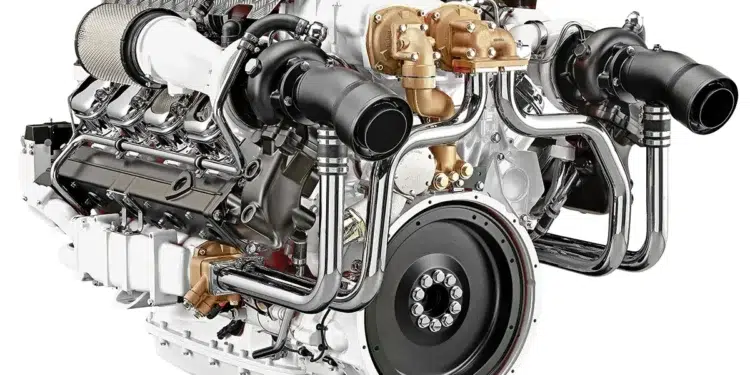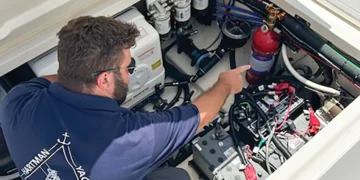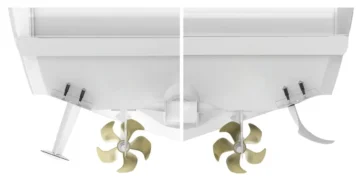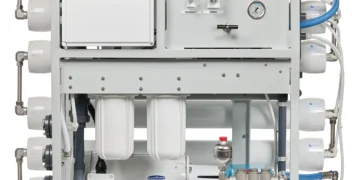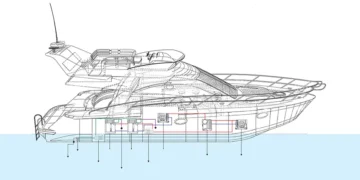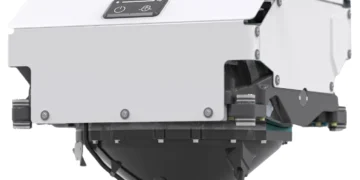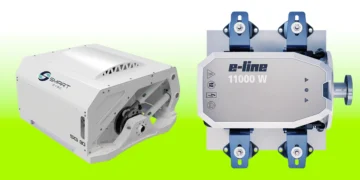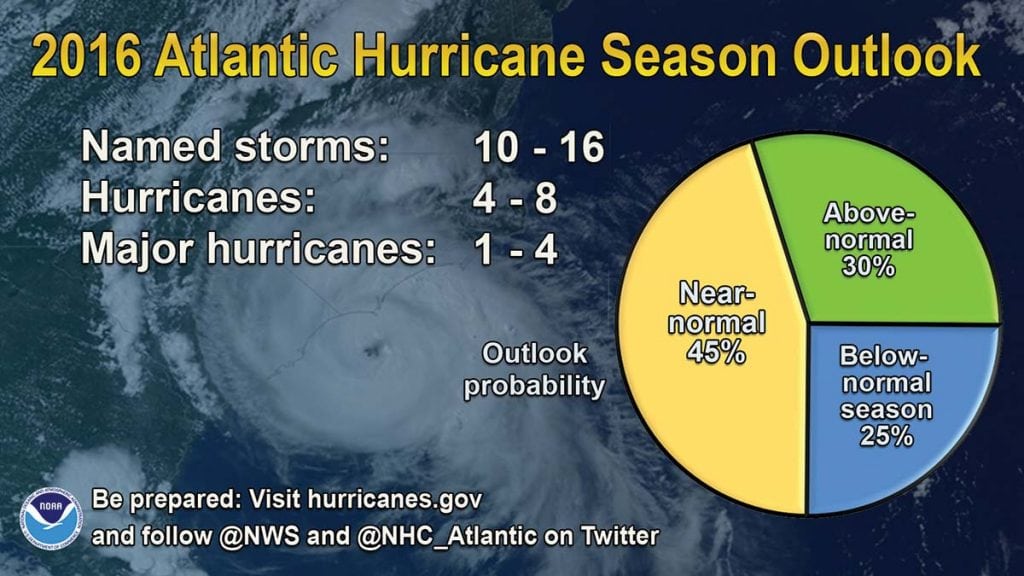RD99 Renewable Diesel for Boats: Scania’s V8 Shows It’s Ready
In a marine industry that’s increasingly demanding both performance and environmental responsibility, Scania’s V8 marine engines running on RD99 renewable diesel are charting a promising new course.
What Is RD99—and Why It’s Drop-In
Long respected for their precision engineering and rugged dependability, Scania marine engines now come with a forward-looking advantage: compatibility with RD99 renewable diesel, a clean-burning, 99 percent renewable fuel derived from feedstocks like used cooking oil. This fuel isn’t just a cleaner option—it’s a direct, drop-in replacement for traditional diesel. No engine modifications. No added complexity. Just performance and sustainability, working in lockstep.
Also Read
Sport Express Cruiser Buyers’ Guide: 22 Standout Boats Going Into 2026
Performance and power come together in 22 versatile vessels. Quick Facts Coverage: 22 sport express cruisers across cats, CCs, jets,...
Scania’s 1,150-hp V8 (DI16) on RD99
At the heart of this breakthrough is Scania’s 1,150-hp DI16-liter V8, the company’s most powerful engine certified for pleasure craft. In recent trials, this powerhouse performed flawlessly on RD99, confirming what Scania has supported for more than a decade—that renewable diesel is more than a theoretical solution; it’s a practical one, ready right now.
Subscribe Here For More Boating Content
“Sustainability continues to remain at the core of Scania’s business strategy as part of our response to the global climate crisis,” said Jorg Franzke, president of Scania USA. “While renewable fuel has been a proven solution for our marine engines since 2011, this demonstration marks the next step in showing the world the incredible results of the combination of RD99 fuel and Scania power plants. We’re grateful to the shared commitment to next-generation, sustainable solutions on the water from our partners at Viking for the opportunity to bring boating further into the future.”
Scania's RD99 Performance and Emissions
The advantages for boaters are significant. RD99 delivers the same performance and reliability as petroleum diesel but with up to 90 percent fewer lifecycle greenhouse gas (GHG) emissions, depending on its source. That means owners of boats powered by Scania engines can dramatically reduce their carbon footprint without sacrificing power, speed, or range. And because RD99 is chemically similar to conventional diesel, boaters benefit from plug-and-play simplicity—no additional maintenance, no new infrastructure, and no guesswork.
Also Read:
Nautical Gift Guide 2025: 26 Ideas Boat Owners Love
Grace Them With Your Presents Drawing a blank when it comes to your holiday gift-giving list? Have no...
Scania’s commitment to sustainability isn’t a new talking point; it’s a long-term strategy woven into the brand’s DNA. The company has supported renewable fuel capability across its marine engine lineup since 2011. What’s new is the growing industry recognition, bolstered by partners like Viking Yachts, that clean marine propulsion isn’t a future concept. It’s here, it works, and it doesn’t ask boaters to compromise.
In a market where performance often overshadows environmental concerns, Scania’s RD99-compatible engines prove you can have both. For recreational boaters seeking to reduce their environmental impact while still enjoying the full power of a V8, Scania offers a solution that’s not just sustainable, it’s seamless.
Key Facts Owners Should Know
Fuel: RD99 renewable diesel (HVO); drop-in replacement for petroleum diesel (meets ASTM D975).
Engine: Scania DI16 V8, 1,150 hp (pleasure-craft certified).
Demo: Trials with Viking confirmed RD99 operation without engine modifications.
Performance: No observed loss in power or range vs. petroleum diesel in reported trials.
Emissions: Up to ~90% lifecycle GHG reduction (feedstock and process dependent).
Simplicity: Same fueling workflow; no new onboard infrastructure.
Compatibility: Chemically similar to ULSD; distinct from biodiesel (FAME).
Availability: Strongest in LCFS/low-carbon markets; pricing may carry a premium today.
Owner notes: Verify supplier quality; keep filters/water separators maintained; follow engine OEM guidance.
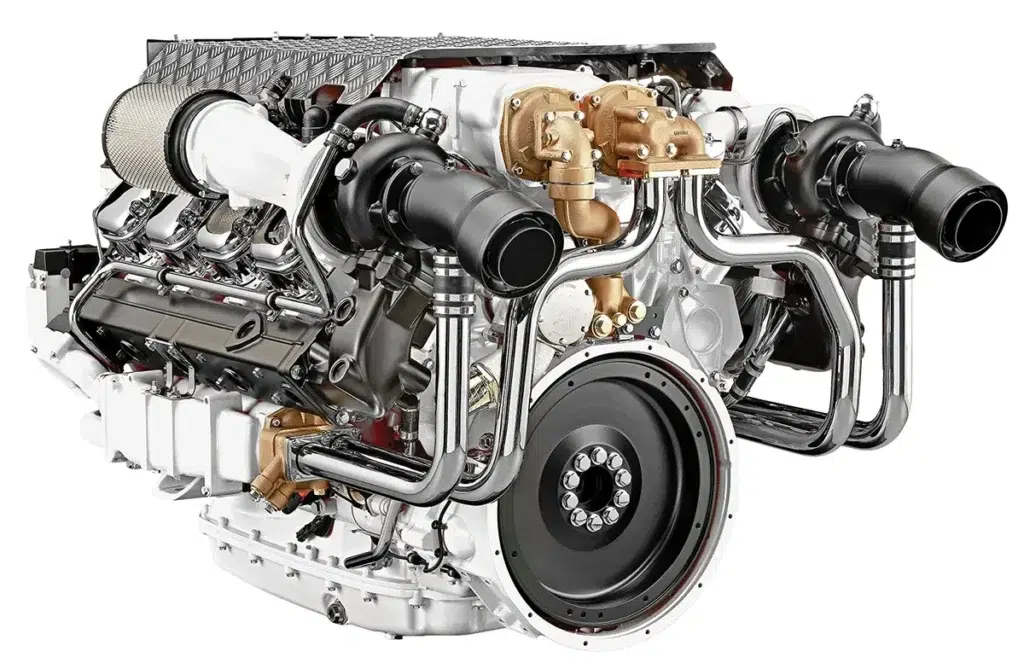
People Also Ask:
Is RD99 the same as biodiesel?
No. RD99 is hydrotreated renewable diesel (HVO) that’s chemically similar to petroleum diesel and is compatible with ASTM D975 systems. Biodiesel is a fatty-acid methyl ester (FAME) with different properties and standards (ASTM D6751).
Do I need engine mods to run RD99 in Scania V8s?
No. Demonstrations with Scania’s DI16 1,150-hp V8 showed RD99 functioning as a drop-in fuel with no engine modifications required.
Will RD99 reduce performance or range?
Trials reported no noticeable loss in power or range compared to ULSD. As always, results can vary with load, hull, and conditions.
How much can RD99 cut emissions?
Lifecycle GHG reduction depends on feedstock and production method; reputable ranges are ~60% to ~90% versus fossil diesel.
What about availability and price?
Best availability is currently in low-carbon fuel markets (e.g., California). Prices can be at a premium vs. ULSD but may narrow as supply scales.
Any maintenance differences?
Routine diesel best practices apply—use quality fuel, monitor filters/water separators, and follow Scania’s service intervals.
By Christina Lawrence


